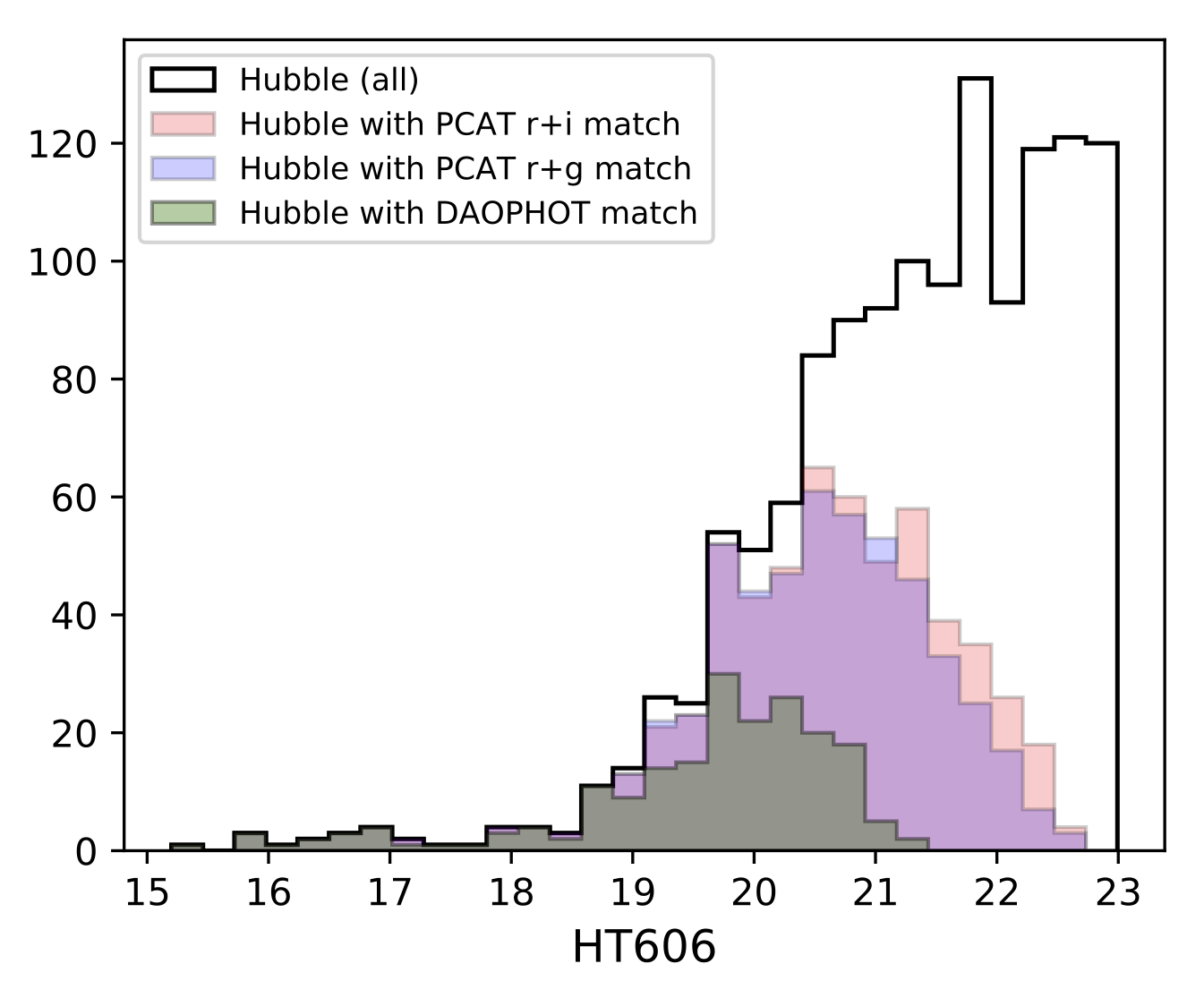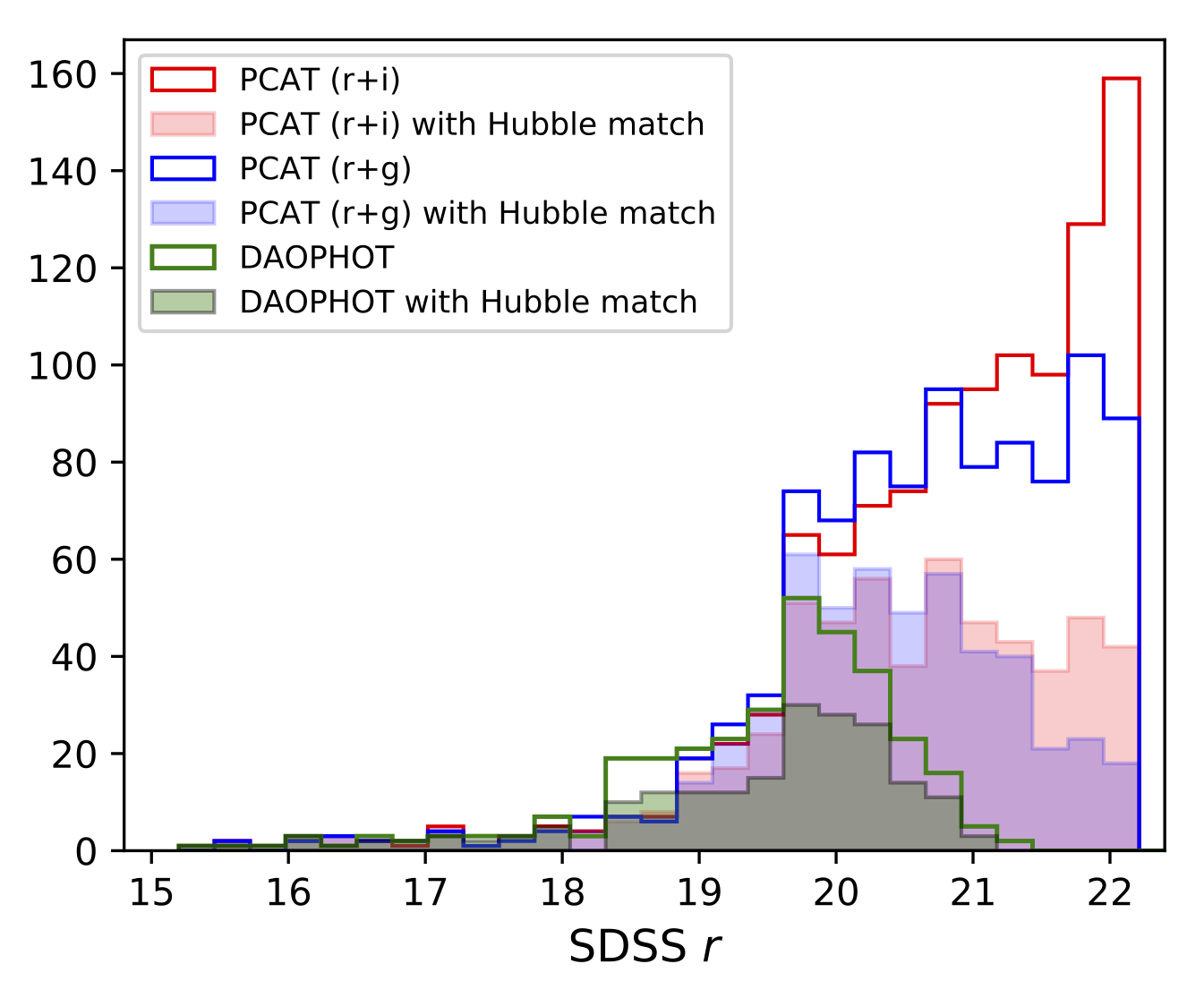The Universe SPHEREx Will See: Empirically Based Galaxy Simulations and Redshift Predictions
Accepted to ApJ, link here.Abstract: We simulate galaxy properties and redshift estimation for SPHEREx, the next NASA Medium Class Explorer. To make robust models of the galaxy population and test spectro-photometric redshift performance for SPHEREx, we develop a set of synthetic spectral energy distributions based on detailed fits to COSMOS2020 photometry spanning 0.1-8 micron. Given that SPHEREx obtains low-resolution spectra, emission lines will be important for some fraction of galaxies. Here we expand on previous work, using better photometry and photometric redshifts from COSMOS2020, and tight empirical relations to predict robust emission line strengths and ratios. A second galaxy catalog derived from the GAMA survey is generated to ensure the bright (mAB<18 in the i-band) sample is representative over larger areas. Using template fitting to estimate photometric continuum redshifts, we forecast redshift recovery of 19 million galaxies over 30000 sq. deg. with σz<0.003(1+z), 445 million with σz<0.1(1+z) and 810 million with σz<0.2(1+z). We also find through idealized tests that emission line information from spectrally dithered flux measurements can yield redshifts with accuracy beyond that implied by the naive SPHEREx channel resolution, motivating the development of a hybrid continuum-line redshift estimation approach.
We have released the full set of simulated SEDs, which span 0.1-8 micron, and synthetic emission line catalogs from this work on Zenodo. The simulations are readily adaptable and can be used in multi-survey predictions beyond SPHEREx science cases.
</div>PCAT-DE: Reconstructing Pointlike and Diffuse Signals in Astronomical Images Using Spatial and Spectral Information
Accepted to AJ, link here.Abstract: Observational data from astronomical imaging surveys contain information about a variety of source populations and environments, and their complexity will increase substantially as telescopes become more sensitive. Even for existing observations, measuring the correlations between pointlike and diffuse emission can be crucial to correctly inferring the properties of any individual component. For this task, information is typically lost, because of conservative data cuts, aggressive filtering, or incomplete treatment of contaminated data. We present the code PCAT-DE, an extension of probabilistic cataloging, designed to simultaneously model pointlike and diffuse signals. This work incorporates both explicit spatial templates and a set of nonparametric Fourier component templates into a forward model of astronomical images, reducing the number of processing steps applied to the observed data. Using synthetic Herschel-SPIRE multiband observations, we demonstrate that point-source and diffuse emission can be reliably separated and measured. We present two applications of this model. For the first, we perform point-source detection/photometry in the presence of galactic cirrus and demonstrate that cosmic infrared background galaxy counts can be recovered in cases of significant contamination. In the second, we show that the spatially extended thermal Sunyaev–Zel'dovich effect signal can be reliably measured even when it is subdominant to the pointlike emission from individual galaxies.
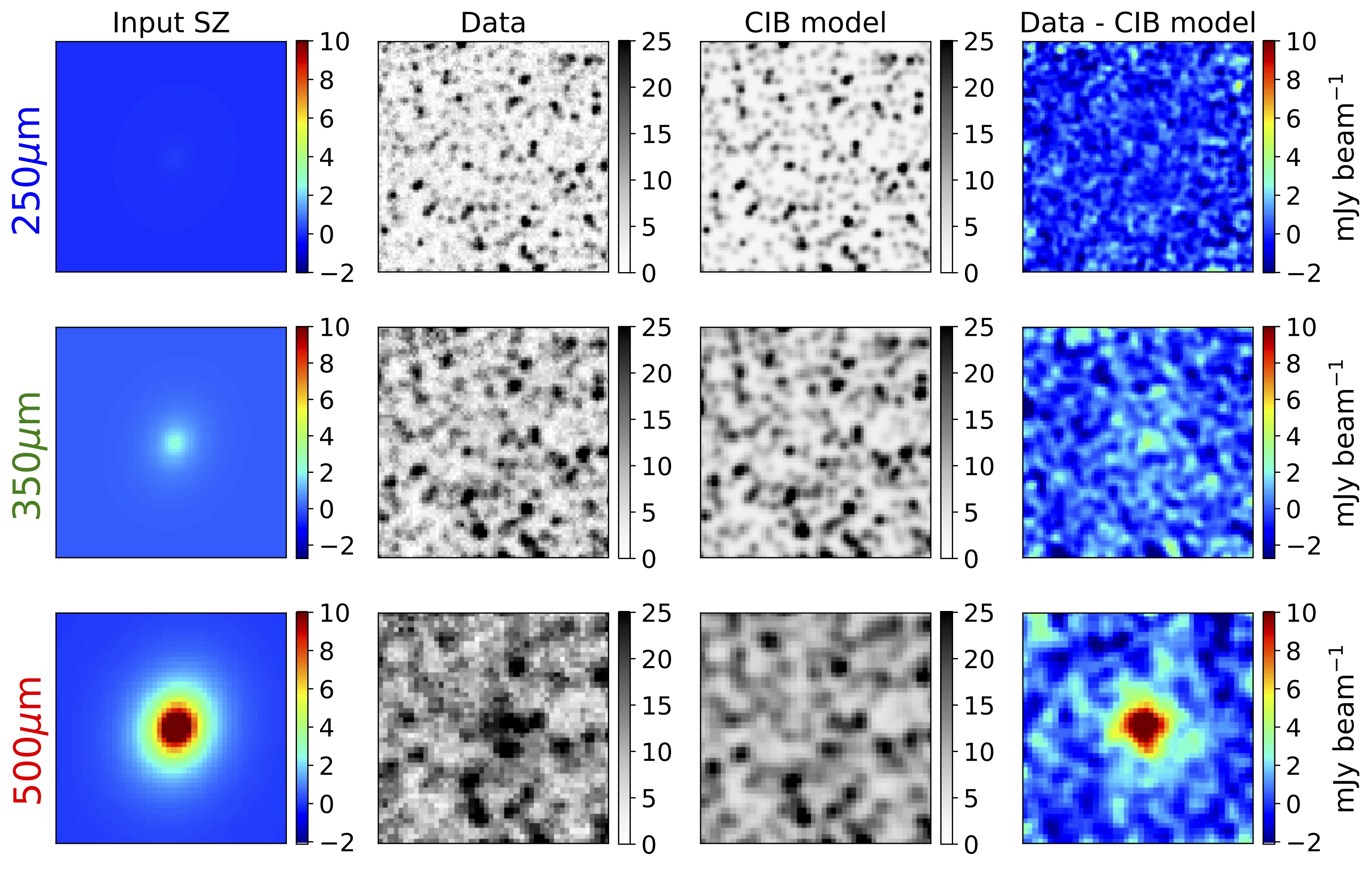
Measurement of the Relativistic Sunyaev–Zeldovich Correction in RX J1347.5-1145
Co-led with Victoria Butler, Accepted to AJ, link here.Abstract: We present a measurement of the relativistic corrections to the thermal Sunyaev–Zel'dovich (SZ) effect spectrum, the rSZ effect, toward the massive galaxy cluster RX J1347.5-1145 by combining submillimeter images from Herschel-SPIRE with millimeter wavelength Bolocam maps. Our analysis simultaneously models the SZ effect signal, the population of cosmic infrared background galaxies, and the galactic cirrus dust emission in a manner that fully accounts for their spatial and frequency-dependent correlations. Gravitational lensing of background galaxies by RX J1347.5-1145 is included in our methodology based on a mass model derived from the Hubble Space Telescope observations. Utilizing a set of realistic mock observations, we employ a forward modeling approach that accounts for the non-Gaussian covariances between the observed astrophysical components to determine the posterior distribution of SZ effect brightness values consistent with the observed data. We determine a maximum a posteriori (MAP) value of the average Comptonization parameter of the intracluster medium (ICM) within R2500 to be 〈y〉2500 = 1.56 × 10−4, with corresponding 68% credible interval [1.42, 1.63] × 10−4, and a MAP ICM electron temperature of 〈Tsz〉2500 = 22.4 keV with 68% credible interval spanning [10.4, 33.0] keV. This is in good agreement with the pressure-weighted temperature obtained from Chandra X-ray observations, 〈Tx,pw〉2500 = 17.4 ± 2.3 keV. We aim to apply this methodology to comparable existing data for a sample of 39 galaxy clusters, with an estimated uncertainty on the ensemble mean 〈Tsz〉2500 at the ≃ 1 keV level, sufficiently precise to probe ICM physics and to inform X-ray temperature calibration.
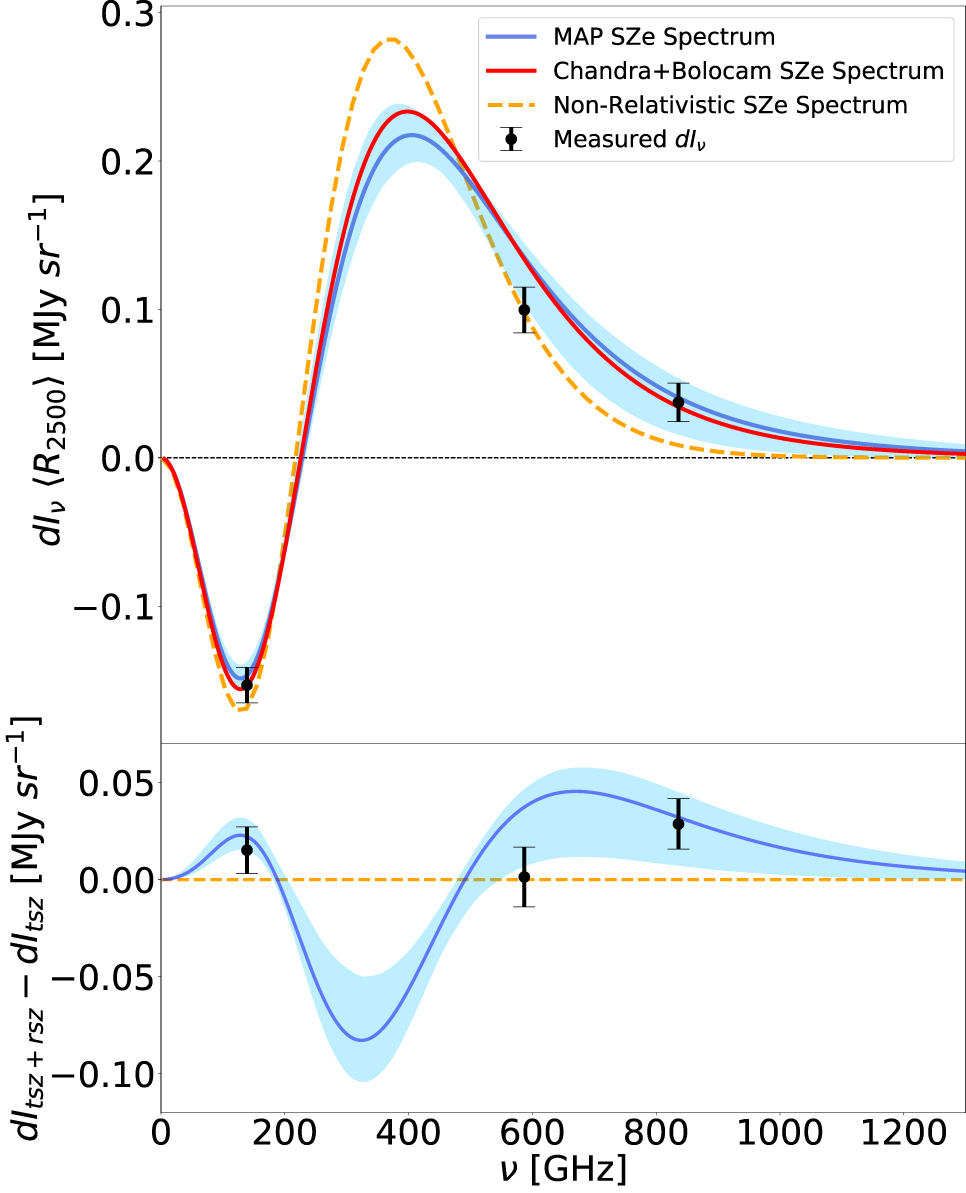
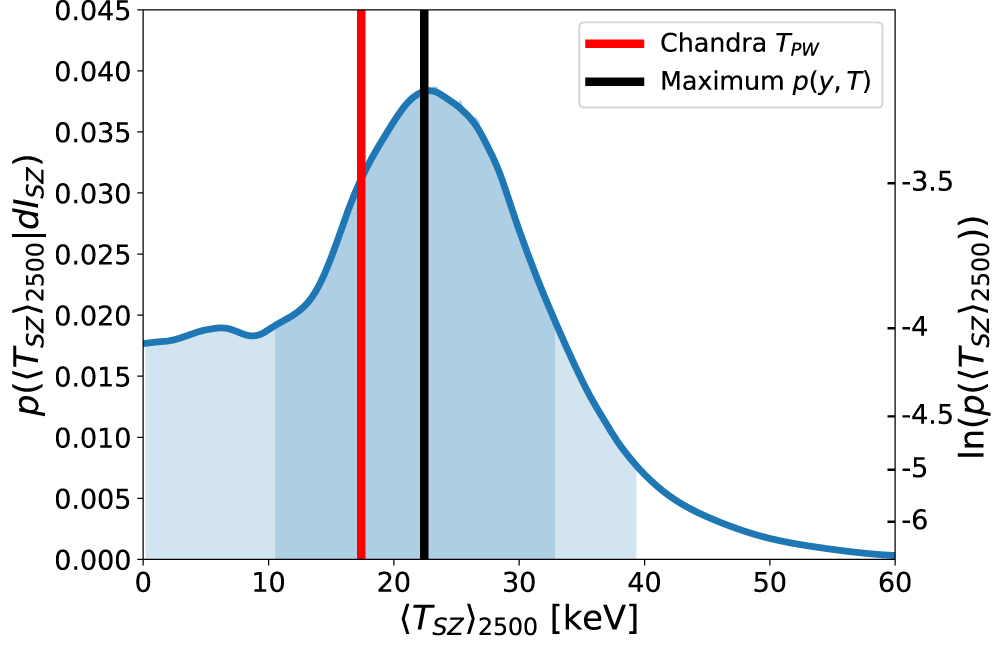
Non-linear 3D Cosmic Web Simulation with Heavy-Tailed Generative Adversarial Networks
In collaboration with Philippe Berger and George Stein. Accepted to Physical Review D, arXiv link here.Many inference problems in cosmology incorporate information from simulations when making comparisons to observational data. Comparing data to simulations (e.g., N-body, hydrodynamical, etc.) can be challenging when the data are high-dimensional and when generating the simulations is computationally expensive. Some summary statistics can be analytically derived (the power spectrum being one example), but for higher order statistics and covariances these analytical prescriptions often have limitations. I am interested in the ways deep generative modeling can be used to bridge the gap between expensive simulations and robust cosmological inference.
My collaborators and I investigated how well generative adversarial networks (GANs) could emulate evolved dark matter density fields trained on ensembles of N-body simulations. Deep learning methods excel at modeling non-linear data, so by emulating directly to the data space, summary statistics like the power spectrum and bispectrum can be predicted well into the small-scale, non-linear regime where analytic methods fail but where there is often more constraining power. In addition to reproducing the two- and three-point statistics of GADGET dark matter simulations (and their covariances), we demonstrated the capability for these models to interpolate in redshift space. Work by others following this publication has extended this deep generative modeling approach to interpolate cosmological parameters and model other fields such as those from hydrodynamical simulations.
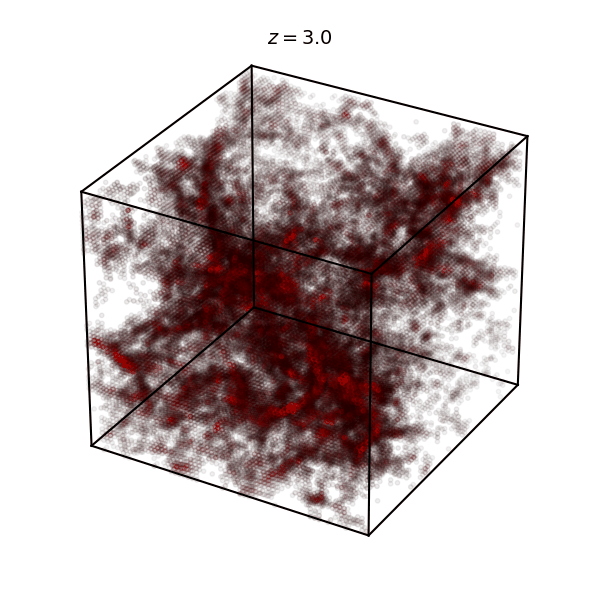
Multi-band Probabilistic Cataloging: A Joint Fitting Approach to Point-source Detection and Deblending
Supervised by Douglas Finkbeiner, in collaboration with Stephen Portillo and Tansu DaylanAbstract: Probabilistic cataloging (PCAT) outperforms traditional cataloging methods on single-band optical data in crowded fields. We extend our work to multiple bands, achieving greater sensitivity (∼0.4 mag) and greater speed (500×) compared to previous single-band results. We demonstrate the effectiveness of multiband PCAT on mock data, in terms of both recovering accurate posteriors in the catalog space and directly deblending sources. When applied to Sloan Digital Sky Survey (SDSS) observations of M2, taking Hubble Space Telescope data as truth, our joint fit on r- and i-band data goes ∼0.4 mag deeper than single-band probabilistic cataloging and has a false discovery rate less than 20% for F606W ≤ 20. Compared to DAOPHOT, the two-band SDSS catalog fit goes nearly 1.5 mag deeper using the same data and maintains a lower false discovery rate down to F606W ∼ 20.5. Given recent improvements in computational speed, multiband PCAT shows promise in application to large-scale surveys and is a plausible framework for joint analysis of multi-instrument observational data. https://github.com/RichardFeder/multiband_pcat.
Check out our paper on the arXiv (August 2019) and the published version. And check out this article by AAS Nova about the publication!
